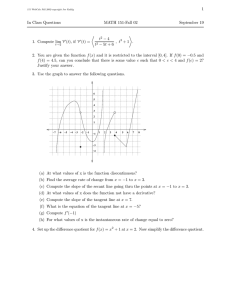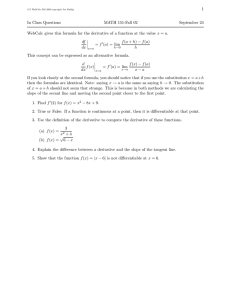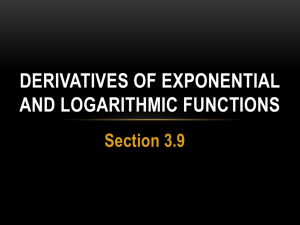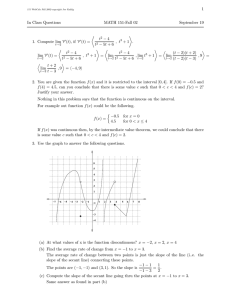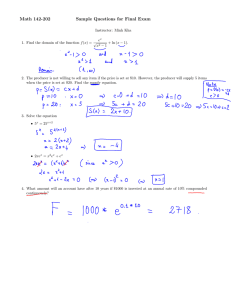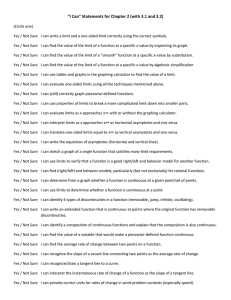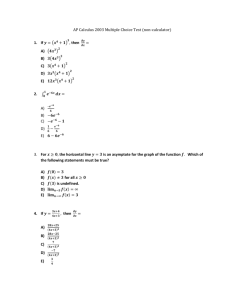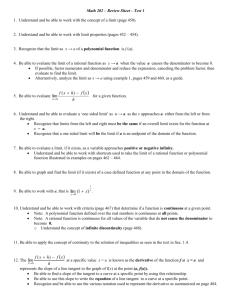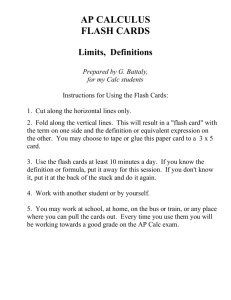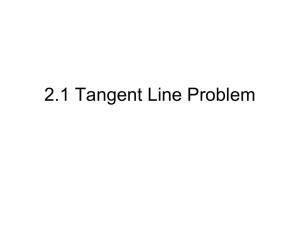MATH 121 – Test #1 Study Guide
advertisement
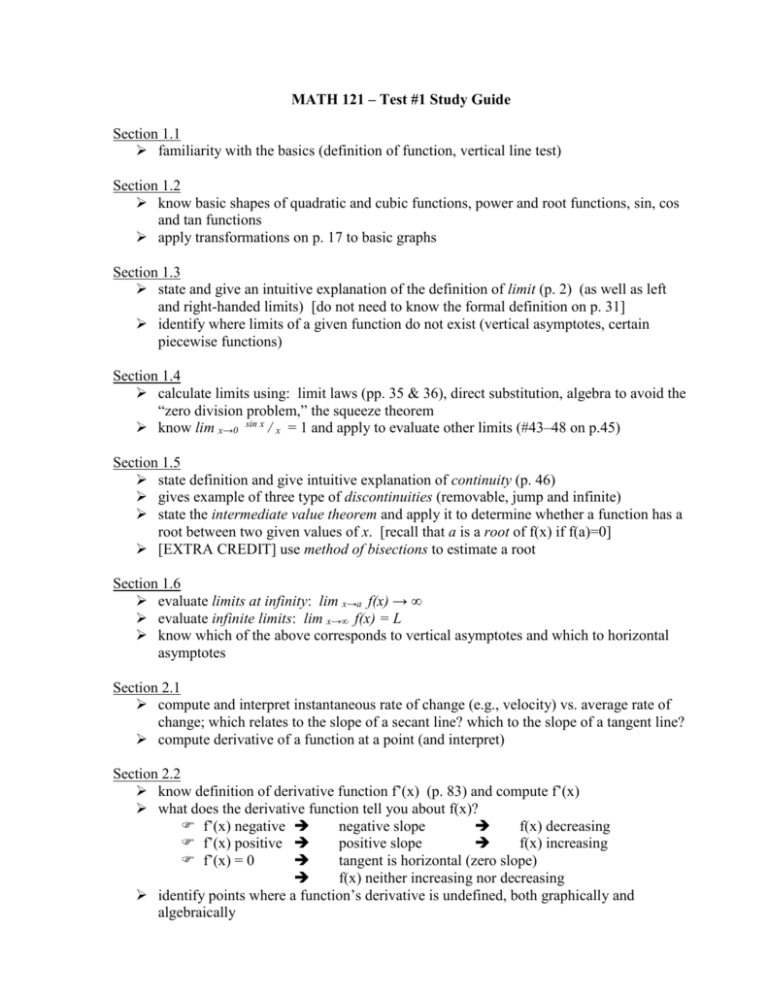
MATH 121 – Test #1 Study Guide Section 1.1 familiarity with the basics (definition of function, vertical line test) Section 1.2 know basic shapes of quadratic and cubic functions, power and root functions, sin, cos and tan functions apply transformations on p. 17 to basic graphs Section 1.3 state and give an intuitive explanation of the definition of limit (p. 2) (as well as left and right-handed limits) [do not need to know the formal definition on p. 31] identify where limits of a given function do not exist (vertical asymptotes, certain piecewise functions) Section 1.4 calculate limits using: limit laws (pp. 35 & 36), direct substitution, algebra to avoid the “zero division problem,” the squeeze theorem know lim x→0 sin x / x = 1 and apply to evaluate other limits (#43–48 on p.45) Section 1.5 state definition and give intuitive explanation of continuity (p. 46) gives example of three type of discontinuities (removable, jump and infinite) state the intermediate value theorem and apply it to determine whether a function has a root between two given values of x. [recall that a is a root of f(x) if f(a)=0] [EXTRA CREDIT] use method of bisections to estimate a root Section 1.6 evaluate limits at infinity: lim x→a f(x) → ∞ evaluate infinite limits: lim x→∞ f(x) = L know which of the above corresponds to vertical asymptotes and which to horizontal asymptotes Section 2.1 compute and interpret instantaneous rate of change (e.g., velocity) vs. average rate of change; which relates to the slope of a secant line? which to the slope of a tangent line? compute derivative of a function at a point (and interpret) Section 2.2 know definition of derivative function f’(x) (p. 83) and compute f’(x) what does the derivative function tell you about f(x)? f’(x) negative negative slope f(x) decreasing f’(x) positive positive slope f(x) increasing f’(x) = 0 tangent is horizontal (zero slope) f(x) neither increasing nor decreasing identify points where a function’s derivative is undefined, both graphically and algebraically
